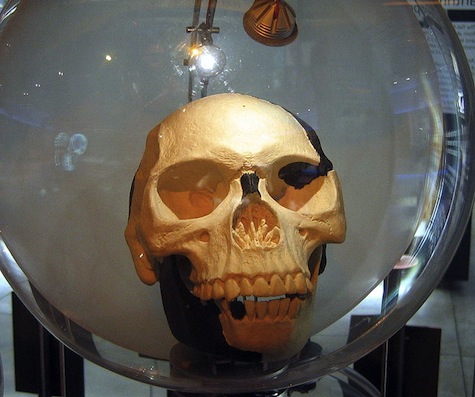 Evolution
Evolution
Scientific Fraud and Piltdown, the “Missing Link,” at One Hundred

Today is the 100th anniversary of the debut of Piltdown man, the great hoax and supposed “missing link” demonstrating the bridge by which ape-like pre-humans became man. Our friend Bruce Ramsey at the Seattle Times has a smart column (“Science fiction: when researchers make stuff up“):
Tuesday is the centennial of the grossest fraud of 20th-century science: Piltdown man. It is a case worth remembering.
On Dec. 18, 1912, amateur geologist Charles Dawson presented to the Geological Society of London a partial skull. It was purported to be a human ancestor 500,000 to 1 million years old, an age scientists now assign to Homo erectus. Dawson said he had found the fossils in a gravel pit near Piltdown Common, south of London.
Dawson had no scientific credentials, but his friend Arthur Smith Woodward did. Woodward was the keeper of the geological department at the British Museum. He had been at the dig and had seen the jawbone “fly out” of the ground under the blow of Dawson’s pick.
There was a problem with the jawbone. It was from an orangutan only a few hundred years old. It was fitted with two fossilized chimpanzee teeth, filed down to make them look more like human teeth. The cranium fragments were human, from the Middle Ages. All had been treated with an iron solution and acid to make them look older.
Scientists didn’t have many fossil skulls in 1912, but none of them looked like a human cranium with an ape jaw.
Several scientists, including one from the Smithsonian Institution, argued that the jaw and cranium did not match. It took 40 years for them to be proved right, and even longer for Dawson to be confirmed as the con man responsible.
Science is human. It is subject to error and, what’s more, malice. Unlike some other purported paths to truth, science has a way of detecting errors, but not an automatic way. Someone has to do it.
“Malice.” Isn’t that the right word to describe so much of the stuff we wade through every day in trying to overcome the prejudices that guard against any challenge to Darwinian evolutionary theory? Not merely prejudice, prejudgement of the scientific case before you’ve even considered the arguments and evidence on the other side, but genuine malice.
Piltdown’s reign lasted 40 years. Darwin’s, so far, 153.
On the exposure of the Piltdown skull in 1953, C.S. Lewis chuckled to a correspondent, “I can’t help sharing a sort of glee with you about the explosion of poor old Piltdown… one inevitably feels what fun it wd. be if this were only the beginning of a landslide.” (Quoted by John West in The Magician’s Twin, p. 114.)
Around here, we chronicle the sounds of rocks as they tumble downward.
Image: Piltdown skull replica, Wikipedia.
